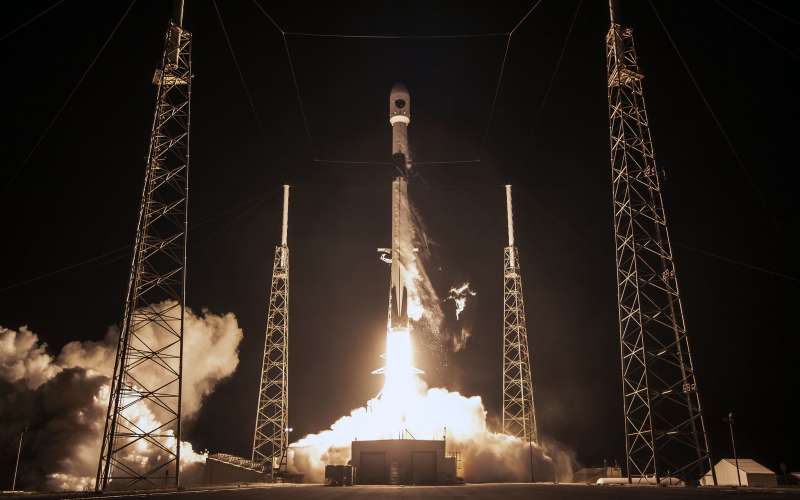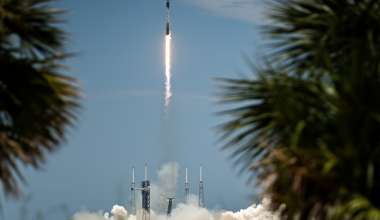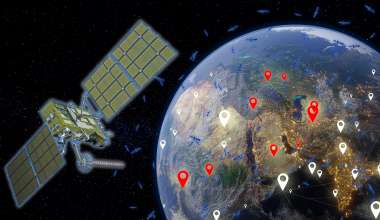The Aerospace Corporation successfully supported a national security space launch remotely for the fourth time since COVID-19 conditions. Aerospace personnel used a highly distributed remote STARS capability to support the SpaceX Falcon 9 F9-098 mission that lifted off from SLC-40 at Cape Canaveral Air Force Station on November 5 at 6:24 PM EST and successfully separated the GPS III-4 spacecraft into a medium earth transfer orbit.
Built by Lockheed Martin, GPS III-4 is the fourth satellite to be deployed in the third-generation Global Positioning System. GPS III satellites provide three times greater accuracy and greatly enhanced anti-jamming capability relative to their predecessors.
The F9-098 mission utilized a Falcon 9 Upgrade Block 5 vehicle to launch the GPS III-4 spacecraft. The F9-098 first stage booster and fairing were first-use items, and this was the second National Security Space Launch (NSSL) mission to include recovery of the first stage booster, which successfully landed on a downrange drone ship. What was unique about this booster recovery is that Space Force plans to reuse this booster (a first for NSSL) for the GPS III-5 mission during the summer of 2021. Aerospace has been at the forefront in defining standards and criteria for reuse and our team is actively engaged in reuse non-recurring design validation (NRDV).

Although this mission was almost identical to the GPS III-3 mission that launched on June 30, the vehicle that launched on November 5 required significant efforts by the team to clear an earlier launch attempt anomaly and re-verify our requirements. The first GPS III-4 launch attempt on October 3 was scrubbed at approximately T-3 sec due to an engine anomaly that triggered an automatic abort to protect engine hardware. That led to a month-long joint anomaly investigation between SpaceX, Space Force, Aerospace and NASA with the team concluding that the most probable cause was material blocking a relief valve in the engine’s gas generator, which powers the Merlin 1D engine turbo pumps.
The Aerospace team performed outstanding work in the weeks preceding launch including active involvement in developing and adjudicating the fault tree, performing pedigrees of additional hardware, monitoring additional testing, performing independent analyses, and working closely with SpaceX on the mission (and fleet) corrective actions which paved the way for the successful launch on November 5.
The significant achievements of the team were highlighted by Space Force and Aerospace leadership. The team received kudos for their outstanding work demonstrating resilience by working long hours to mitigate the anomaly, emerging issues, and launching during the pandemic – maintaining technical excellence and dedication to mission success.






